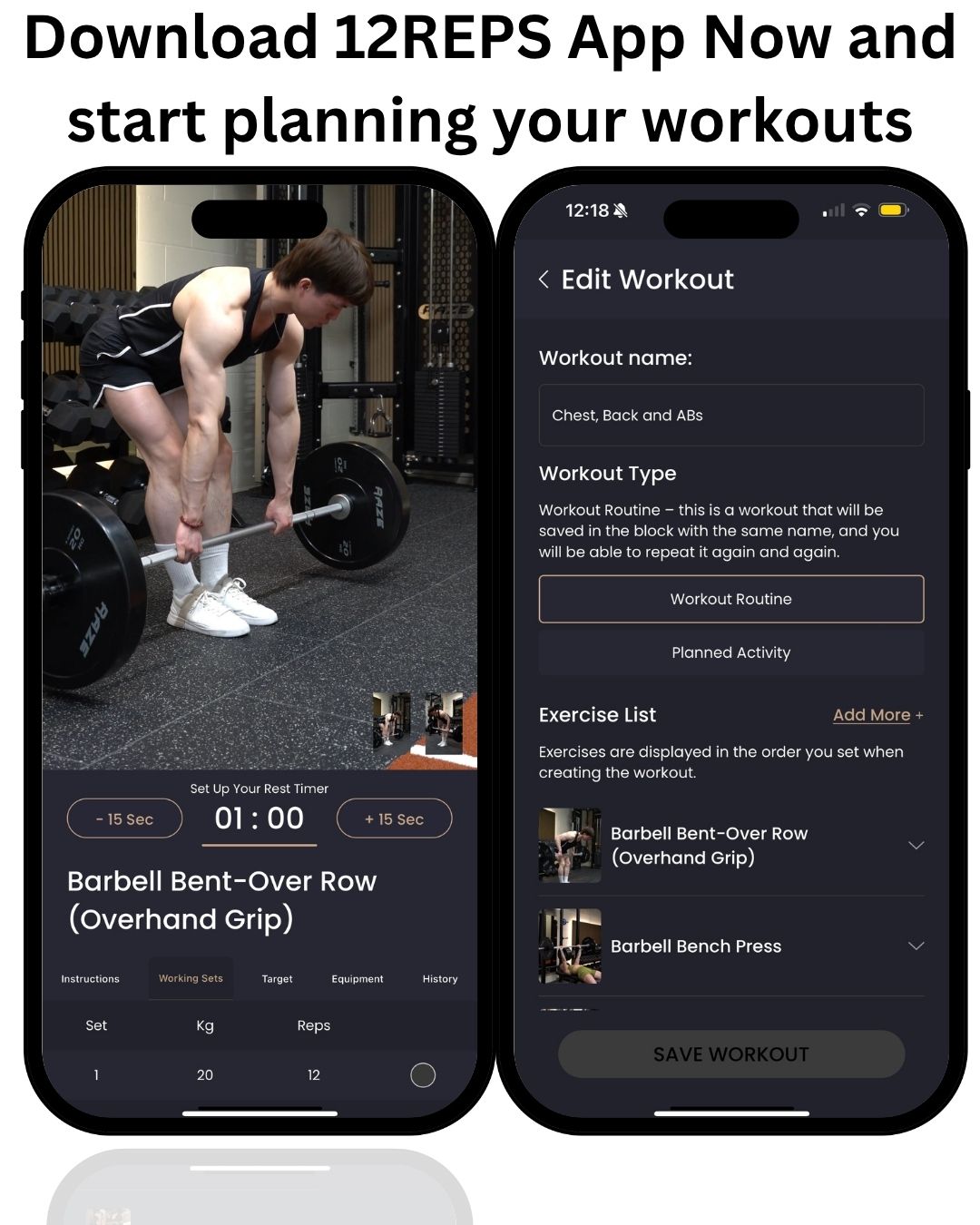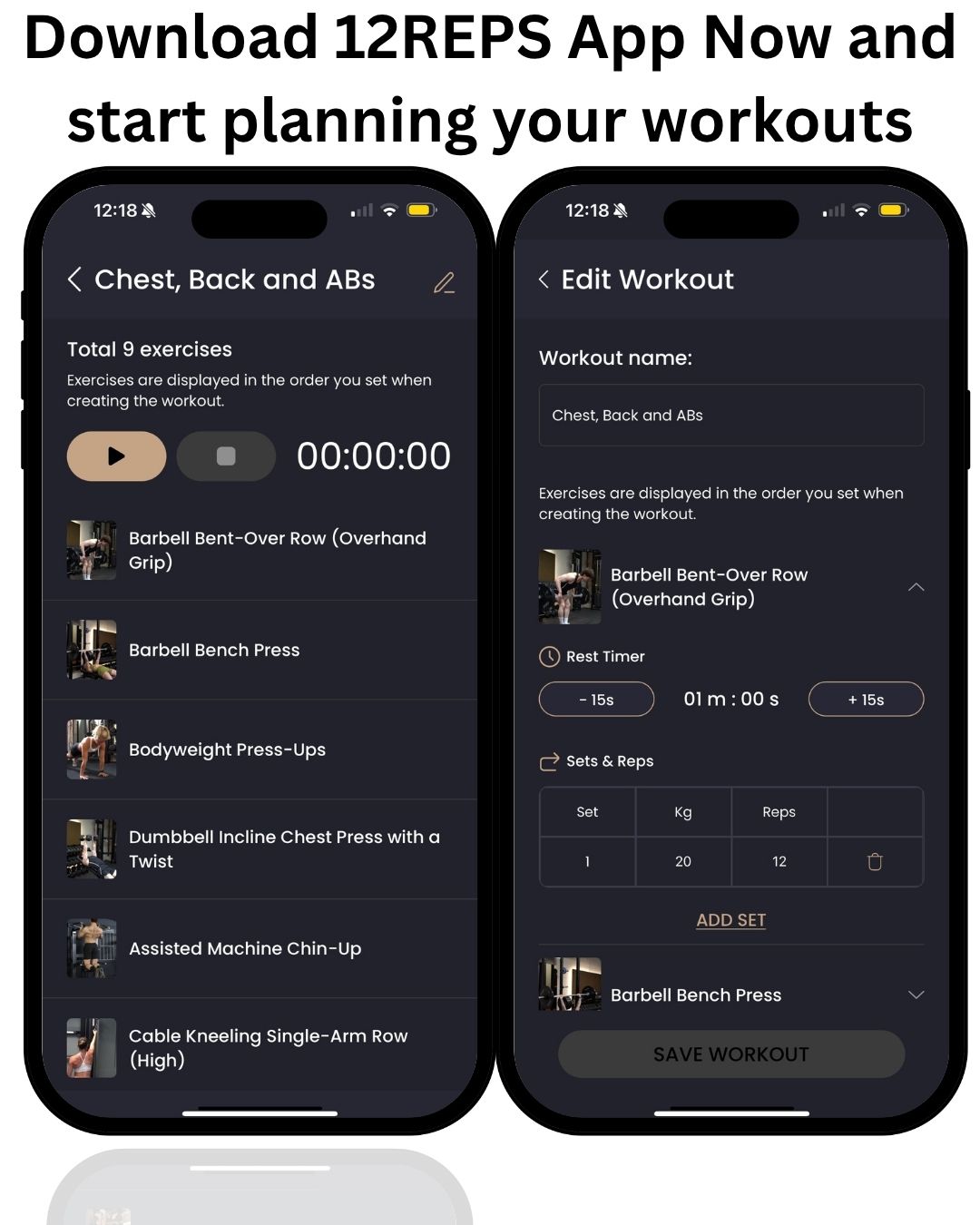By Will Duru, BSc (Hons) Sport and Exercise Science – Award-Winning Personal Trainer (10+ years’ experience)
If you’re serious about building muscle, a well-structured workout routine and a solid nutrition plan are essential. Over the last decade as a personal trainer, I’ve helped many clients (and myself) achieve dramatic results. In this guide, I’ll share my proven 5-day training split that helped me gain 8kg of muscle, all backed by proper nutrition, progressive overload, and optimal recovery. We’ll break down the entire week of training (Monday through Sunday), explain key principles like progressive overload (continually challenging your muscles to grow), and cover the importance of nutrition (protein, carbs, fats per bodyweight) for lean muscle gains.
This plan is accessible (using just dumbbells, barbells, machines, kettlebells, or TRX) yet effective, and it’s designed to challenge both men and women. (Ladies, lifting heavy will not make you bulky; in fact, it helps burn fat and build lean muscle, as I emphasise in my training programs【16†】.) By the end of this article, you’ll have a complete workout schedule, tips on how to adjust it for your needs, and guidance on nutrition and recovery – everything you need to start your own transformation.

What Is a 5-Day Training Split?
A 5-day training split simply means you train five days per week, targeting specific muscle groups on designated days. This allows for a high training frequency while providing each muscle with adequate rest between sessions. In this program, the week is structured as follows:
- Monday: Chest and Back
- Tuesday: Shoulders, Biceps, Triceps
- Wednesday: Legs, Abs, Calves
- Thursday: Off (Rest and Recovery)
- Friday: Chest, Biceps, Triceps
- Saturday: Back, Hamstrings
- Sunday: Recovery Day (Steam room and Cold Shower therapy)
Each training day focuses on certain muscle groups (or fitness activities), so by the end of the week, you’ve worked all major muscles. Some muscle groups (like chest, back, arms) appear twice for extra stimulus, while others (like legs) are hit once thoroughly. This split helped me systematically train each area, leading to significant muscle gains (8kg) when combined with proper nutrition. It’s a flexible framework – for example, if you prefer legs twice a week, you could adjust the split, but the above layout balances intensity and recovery well.
Benefits of a 5-Day Split: You get focused sessions for each area, so you can train with high volume and intensity without extending workouts too long. Each muscle gets a few days to recover before it’s worked again, which is ideal for growth. Five days of training weekly is challenging yet manageable for most people serious about results. Remember, more days in the gym don’t automatically mean more muscle, but with smart programming, five days allow you to push hard and still recover.

Progressive Overload: The Key to Continuous Muscle Growth
One of the cornerstones of this program (and any effective program) is progressive overload. Progressive overload means gradually increasing the stress on your muscles over time, forcing them to adapt by growing stronger and bigger. In practical terms, you achieve this by steadily upping the weight, reps, or intensity as you become capable of more. For example, if you bench press 60 kg for 10 reps today, you might aim for 11 reps next week or 65 kg for 8 reps, any small increase that challenges your muscles more than before.
Why is this so important? Without progressive overload, your body plateaus, it gets comfortable with the workload and has no reason to further improve. The program outlined here incorporates progressive overload into each week. Each time you repeat a workout (say the next Monday), try to lift a bit heavier or do an extra rep or two (while staying in the 8–12 rep range). Those small improvements compound into big gains over weeks and months. Strength training apps, such as the 12Reps app, even automate this process, personalising your plan and adjusting the load so you never plateau and continue to make progress. The idea is to keep your muscles slightly out of their comfort zone – challenge them, and they will grow.
How to apply progressive overload in this 5-day split:
- Increase Weight: When a certain rep range starts feeling easier, bump the weight up slightly (e.g., 2–5 kg increase) and work back up in reps.
- Increase Reps: If you hit the top of the rep range (12 reps) with good form, try adding one more rep in the next session (e.g., go from 10 reps to 11 or 12).
- Better Form or Tempo: You can also overload by slowing down the tempo (more time under tension) or improving the range of motion to make the exercise harder.
- Add a Set (sparingly): For advanced trainees, occasionally adding an extra working set for a move can increase volume, but be cautious not to do too much too soon.
Remember, the goal is gradual improvement. Pushing too fast can lead to injury or excessive fatigue. This program is designed to make you work hard (8–12 reps should feel challenging!), but always in a controlled, safe manner. I advise aiming for about an 8/10 effort level on most working sets, meaning you have about 1–2 reps left in the tank at the end of a set. This is intense enough to spur growth but leaves a little safety margin. As weeks go by, that 8/10 effort will correspond to heavier weights or more reps, that’s progressive overload in action.

Training Heavy Isn’t Just for Men (Women Should Lift Too!)
When it comes to challenging your muscles, training heavy is effective for everyone. I often encounter the myth, especially among my female clients, that lifting heavy weights will instantly make you “bulky.” Let me assure you, this is far from the truth. The science behind muscle growth, particularly for women, tells a very different story. Women typically have lower levels of muscle-building hormones and tend to build a lean, toned look rather than massive bulk. Lifting challenging weights (with proper form) helps burn fat and build lean muscle, giving that firm, sculpted appearance so many are after.
In fact, heavy compound exercises like squats and deadlifts are fantastic for women’s fitness (just as they are for men). They engage multiple muscle groups, ramp up metabolism, and strengthen your entire body. In my programs, I encourage female trainees to focus on getting stronger; the aesthetic benefits will follow. By incorporating strength training into their routine, women can significantly improve their body composition and confidence. So if you’re a woman following this 5-day split, don’t hold back on those weights! As long as you use progressive overload wisely and maintain good form, you’ll get stronger and more toned without becoming “bulky.” Heavy training is your friend; it challenges your muscles to change, which is exactly what we want.

Nutrition for Muscle Gain: Protein, Carbs, and Fats
Training is only half the battle, nutrition is the other half that truly makes the difference in gaining quality muscle mass. In my case, gaining 8kg of muscle was possible because I paired hard workouts with consistent, nutrient-rich eating. You’ve probably heard the phrase “you can’t out-train a bad diet,” and it’s absolutely true. To build muscle, you need to eat enough total calories and the right balance of macronutrients: protein, carbohydrates, and fats.
- Protein – The Building Block:
Protein is crucial for repairing and building muscle tissue. Aim for roughly 1.6–2.2 grams of protein per kilogram of body weight per day (about 0.8–1g per pound). For example, if you weigh 70 kg, shoot for about 112–154 grams of protein daily. Spread your protein across your meals to optimise muscle repair throughout the day. Good protein sources include lean meats (chicken, turkey, lean beef), fish, eggs, low-fat dairy (Greek yogurt, cottage cheese), and plant-based options like beans, lentils, tofu, and protein powders (whey or plant-based) if needed. Getting ample protein will ensure your body has the raw materials to build new muscle from those tough workouts.
- Carbohydrates – Fuel for Performance:
Carbs often get a bad rap, but they are your muscles’ preferred fuel source for intense training. Consuming enough carbs will power your workouts and help with recovery by replenishing muscle glycogen. A good guideline is around 4–6 grams of carbohydrates per kilogram of body weight per day (about 2–3g per lb), depending on how intense and long your training sessions are. Using the 70 kg person example, that’s roughly 280–420g of carbs each day. Focus on quality carb sources that provide sustained energy and nutrients: oats, whole grain breads/pastas, brown rice, quinoa, sweet potatoes, fruits, and plenty of vegetables. Have a solid dose of carbs in your pre-workout meal (e.g., a banana or bowl of oats a couple hours before training) to ensure you have energy to crush your session, and again in your post-workout meal to aid recovery.
- Fats – Hormones and Health:
Dietary fat is important for overall health and hormone production (including testosterone and other growth-related hormones). It also provides a dense source of calories to help you in a muscle-building (caloric surplus) phase. Aim for about 0.5–1 gram of fat per kilogram of body weight (around 20–30% of your total calories). For a 70 kg individual, this is ~35–70g of fat per day. Prioritise healthy fats such as avocados, nuts, seeds, olive oil, and fatty fish (like salmon). These provide essential fatty acids and have anti-inflammatory benefits, which can aid muscle recovery. Try to limit trans fats and too much saturated fat – a handful of almonds or a tablespoon of olive oil goes a long way for healthy fat intake.
- Calories and Hydration:
To gain muscle (especially 8kg of it!), you’ll likely need to eat in a caloric surplus, meaning consuming more calories than your body burns daily. The macros above will help structure that: once you set protein, carb, and fat targets, you can adjust portions to ensure you’re in a slight surplus (typically 250–500 extra calories per day to gain weight at a moderate pace). Everyone’s needs differ, so monitor your weight and adjust intake if you’re gaining too fast (excess fat) or too slow.
Also, don’t forget water; stay well-hydrated. Muscles are ~75% water, and even mild dehydration can hurt performance. Aim for at least 2-3 litres of water a day, more on training days. Proper hydration supports energy levels, nutrient absorption, and post-exercise recovery.
Summary of Good Macros Sources: (incorporate these into your meal plan)
- Protein: Chicken breast, turkey, lean beef, eggs, fish (tuna, salmon), Greek yogurt, cottage cheese, tofu, lentils, beans, protein shakes.
- Carbs: Oats, whole grain bread/pasta, brown rice, quinoa, sweet potatoes, potatoes, fruits (bananas, berries, etc.), vegetables (broccoli, spinach, etc.).
- Fats: Olive oil, avocado, almonds and other nuts, peanut or almond butter, chia seeds, flaxseeds, walnuts, oily fish (salmon, mackerel).
- Eating good nutrition means mostly whole, unprocessed foods, plenty of protein and veggies, and enough carbs to fuel training. Treat food as fuel for your muscles. If you nail your diet and stick to this training plan, you’ll be amazed at the results. (It’s how I did it – 8kg up and feeling stronger than ever.)
Rest and Recovery: Why Thursday and Sunday Are Key
When you’re excited about gaining muscle, it’s tempting to train every day. But rest days are when your muscles rebuild and grow stronger. In our 7-day schedule, Thursday and Sunday are designated recovery days. Treat them as seriously as training days, your body needs to recuperate from the stress of workouts. Neglecting rest can lead to burnout, injuries, or stalled progress.
Thursday – Off Day: After three consecutive workout days (Mon–Wed), your nervous system and muscles will welcome a break. Use Thursday to rest and focus on light activity and mobility. You can do some gentle stretching or yoga, go for a leisurely walk, or simply relax. This is also a great day to make sure your nutrition is on point, since you’re not in the gym, all those proteins and carbs you eat go toward repairing muscle fibers from earlier in the week. Ensure you get quality sleep too; aim for 7–9 hours to let growth hormone and recovery processes work their magic.
Sunday – Recovery and Therapy: Sunday is another non-lifting day, but we incorporate specific recovery techniques, including steam and cold therapy. Spending time in a steam room or sauna and then taking a cold shower (or alternating between hot and cold) can boost your recovery. I personally like to do about 20 minutes of this contrast therapy on Sundays. For example, you might sit in a steam room for ~10-15 minutes to warm up and loosen your muscles (steam/sauna improves blood circulation, helps relax tight muscles, and can even aid in flushing out metabolic waste). Immediately after, take a cold shower (or a cold plunge if available) for a few minutes. The cold water reduces inflammation, helps decrease muscle soreness, and refreshes your body. You can repeat a hot-cold cycle a couple of times (always end on cold).
This process of alternating heat and cold can leave you feeling invigorated and help your muscles recover faster, ready to hit Monday’s session at full strength. If you don’t have access to a steam room or sauna, a hot bath followed by a cold shower can simulate similar effects at home. The key is the contrast: hot to increase blood flow, cold to reduce swelling and encourage recovery.
Beyond steam and cold therapy, use Sunday to mentally recharge as well. Light stretching, foam rolling tight spots, or even a massage can be beneficial. Come Monday, you want to feel fresh and motivated to tackle a new week of training with progressive overload.
Recovery is part of the program. Don’t skip rest days thinking it will accelerate your gains, in truth, your muscles grow when you rest after being stimulated. So enjoy your downtime guilt-free, knowing it’s an essential component of your transformation.
With the key principles covered, training split structure, progressive overload, the value of heavy lifting for everyone, nutrition fundamentals, and recovery, let’s get into the actual day-by-day workout plan. In the next section, I’ll outline each training day (Monday through Saturday) with exercises, sets, reps, rest, and intensity. Each exercise includes a warm-up and then 4 working sets in the 8–12 rep range. I’ll also suggest a few alternative exercises for each day, so you can swap movements based on the equipment you have or just to add variety. Let’s dive in!
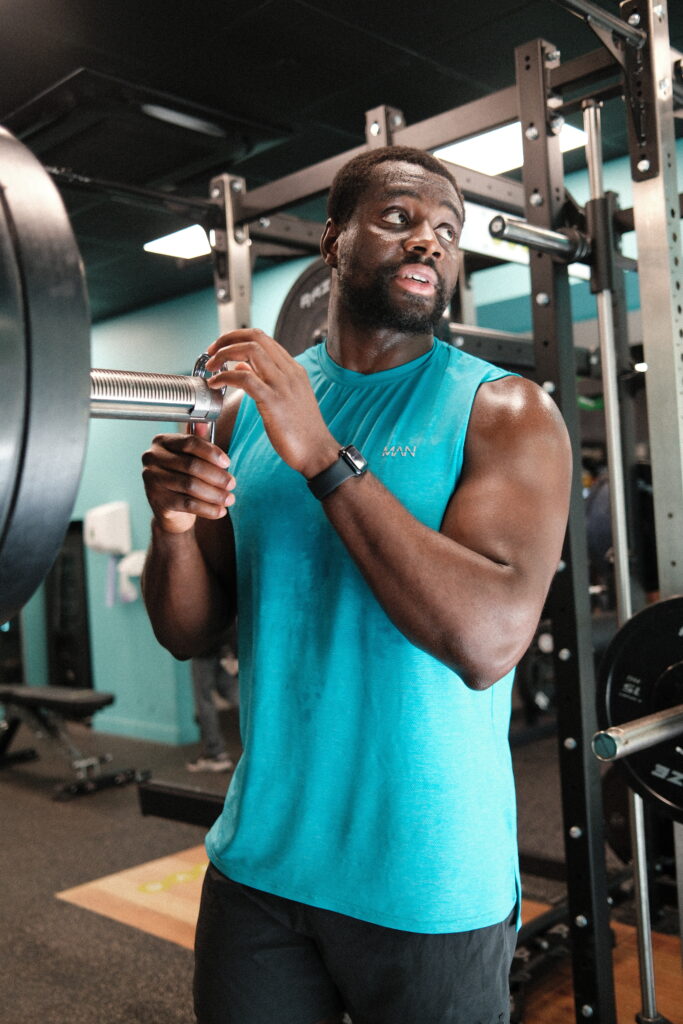
Workout Plan – Day-by-Day Breakdown
How to Read the Plan: For each exercise listed, perform the recommended warm-up followed by 4 working sets of 8–12 reps. “8–12 reps” means choose a weight that lets you get at least 8 reps but not more than 12 with good form; if you can easily do 12+, increase the weight next time (progressive overload!). Rest for about the indicated time between sets to recover enough for the next set. Intensity is listed as a guide – generally aim for a challenging weight (around RPE 8 = 8/10 effort). Always prioritise good form over heavy weight; never sacrifice technique just to lift heavier. If you’re new to an exercise, start light to master the form, then gradually increase the load.
Let’s start with Monday’s session:
Monday – Chest and Back
On Mondays, we hit chest and back, two large upper body muscle groups. Pairing push (chest) and pull (back) exercises in a single workout is an effective way to achieve balance and efficiency. You’ll alternate between chest-focused movements and back-focused movements, which allows one muscle group to rest while the other works. This is a demanding workout, but it will set the tone for the week by targeting major muscles with heavy compound lifts and some isolation.
Monday Workout: (Chest x Back workout – 6 exercises)
Exercise | Warm-Up | Working Sets x Reps | Rest | Intensity |
Barbell Bench Press(Chest) | 2 sets x 10 (light weight) | 4 sets x 8–12 | 2 min | High (RPE ~8) – Heavy push |
Bent-Over Barbell Row(Back) | 2 sets x 10 (light/moderate) | 4 sets x 8–12 | 2 min | High (RPE ~8) – Heavy pull |
Incline Dumbbell Press(Chest) | 1 set x 12 (light) | 4 sets x 8–12 | 90 sec | Moderate-High (focus upper chest) |
Lat Pulldown (Back) | 1 set x 12 (light) | 4 sets x 8–12 | 90 sec | Moderate-High (full stretch) |
Dumbbell Chest Fly(Chest) | 1 set x 12 (light) | 4 sets x 10–12 | 60–90 sec | Moderate (isolation, strict form) |
Seated Cable Row (Back) | 1 set x 12 (light) | 4 sets x 8–12 | 60–90 sec | Moderate-High (squeeze shoulder blades) |
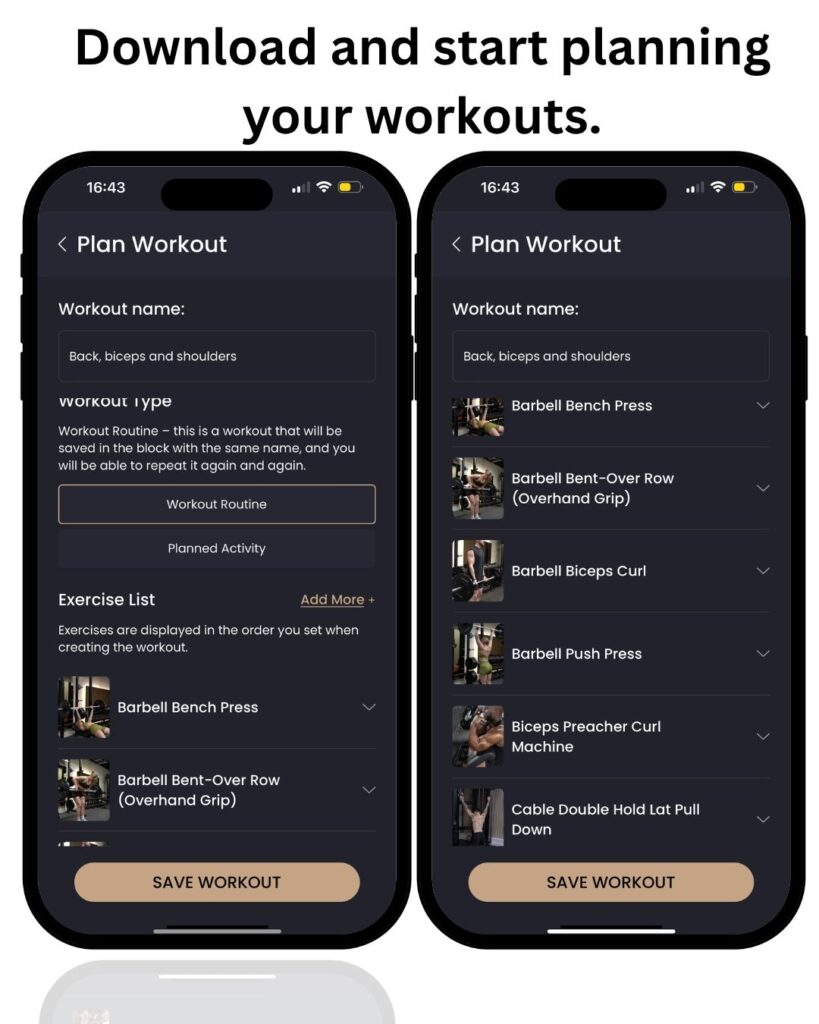
Tuesday – Shoulders, Biceps, and Triceps
Tuesday’s focus is on the shoulders and arms – basically all the upper body muscles we didn’t hit directly on Monday. This day will build your deltoids (shoulders), biceps, and triceps. Strong, well-developed shoulders and arms not only look great, but they also support your big lifts on chest/back days. We’ll start with shoulders (as they’re larger) and then move to biceps and triceps. Some shoulder exercises also engage the triceps (e.g., presses), and some biceps exercises involve the shoulders, so pay attention to form to isolate the target muscles.
Tuesday Workout: (Shoulders & Arms – 6 exercises)
Exercise | Warm-Up | Working Sets x Reps | Rest | Intensity |
Dumbbell Shoulder Press(Shoulders) | 2 sets x 10 (light) | 4 sets x 8–12 | 90 sec | High (RPE ~8) – Overhead push |
Dumbbell Lateral Raise(Shoulders) | 1 set x 12 (light) | 4 sets x 10–12 | 60 sec | Moderate (strict form, feel the burn) |
Barbell Bicep Curl (Biceps) | 1 set x 12 (light) | 4 sets x 8–12 | 90 sec | High (full range, no swinging) |
Triceps Dip (Triceps) | 1 set x 8 (bodyweight warm-up) | 4 sets x 8–12* | 90 sec | High (to failure if bodyweight) |
Hammer Curl (Dumbbell)(Biceps) | 1 set x 10 (light) | 4 sets x 8–12 | 60–90 sec | Moderate-High (neutral grip, slow eccentric) |
Overhead Triceps Extension(Dumbbell/Cable) | 1 set x 12 (light) | 4 sets x 8–12 | 60–90 sec | Moderate-High (full stretch, squeeze at top) |
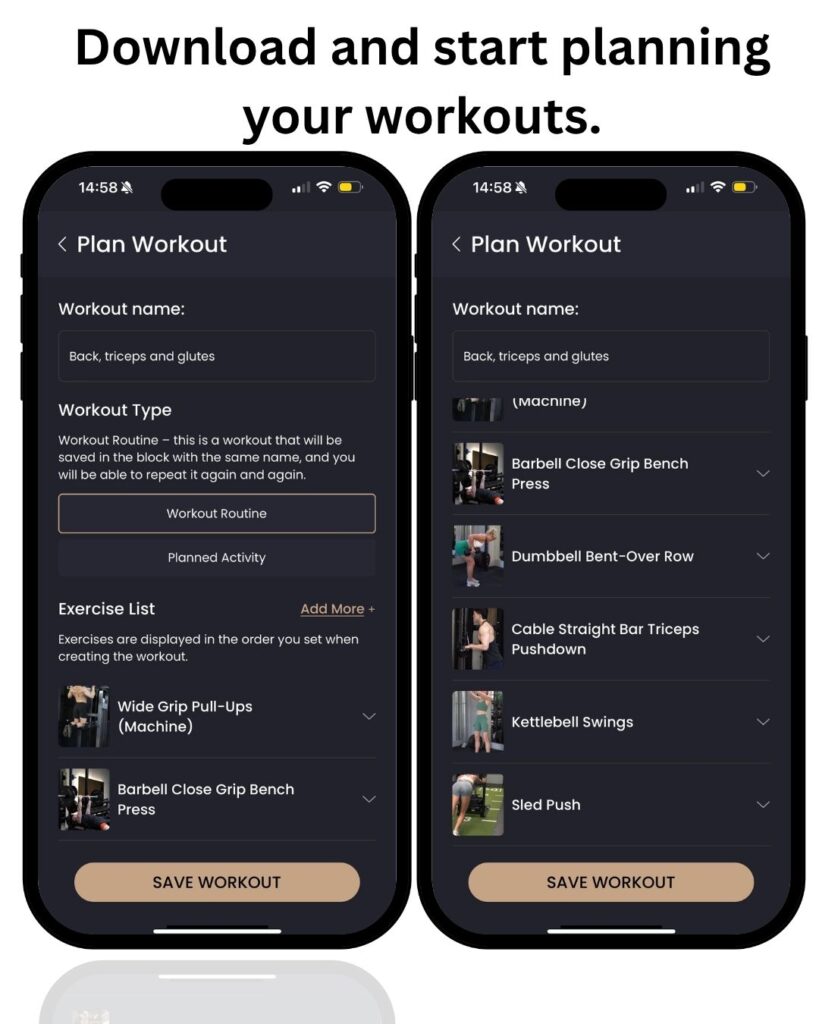
Wednesday – Legs, Abs, and Calves
Wednesday is leg day (with a bit of abs and calves thrown in). This is where we target the quads, hamstrings, glutes, and calves – the largest muscle groups in the body, plus some core work. Training legs is tough but incredibly rewarding: it stimulates a lot of muscle growth (your body releases growth hormones and testosterone in response to big movements like squats and deadlifts) and builds overall functional strength. We’ll hit the quads and glutes hard with squats and lunges, the hamstrings with a curl, the calves with raises, and finish off with some abdominal work.
Wednesday Workout: (Legs, Abs & Calves – 6 exercises)
Exercise | Warm-Up | Working Sets x Reps | Rest | Intensity |
Barbell Back Squat(Quads/Glutes) | 2 sets x 8–10 (light) | 4 sets x 8–12 | 2–3 min | High (RPE ~8) – Heavy compound |
Dumbbell Walking Lunge(Quads/Glutes) | 1 set x 10 (each leg, no weight or light) | 4 sets x 8–10 each leg | 2 min | High – Deep steps, controlled |
Leg Curl (Machine)(Hamstrings) | 1 set x 12 (light) | 4 sets x 10–12 | 90 sec | Moderate-High (feel hamstring contraction) |
Standing Calf Raise (Calves) | 1 set x 15 (bodyweight) | 4 sets x 12 | 60–90 sec | High (full range: stretch & squeeze) |
Barbell Hip Thrust(Glutes/Hamstrings) | 1 set x 10 (light) | 4 sets x 8–12 | 2 min | High (drive through heels, squeeze glutes) |
Hanging Leg Raise (Abs) | 1 set x 5 (warm-up half reps) | 4 sets x 10–15 | 60 sec | Moderate (control the movement, no swing) |
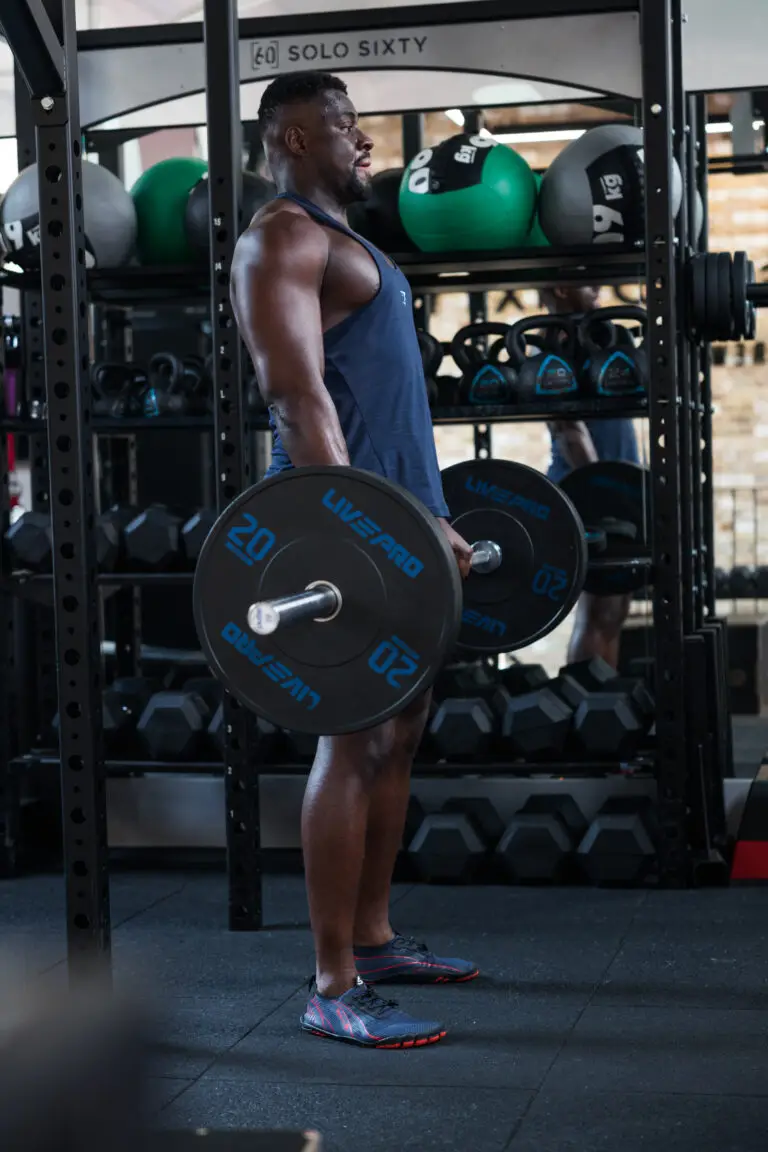
Thursday – Off (Rest Day)
Rest day – no weight training. As discussed in the recovery section, take this day to recharge. Focus on nutrition (make sure you’re eating enough protein and calories to recover from the first half of the week). You can do some light stretching, foam rolling, or a gentle walk to stay limber, but avoid intense activity that could fatigue your muscles. Some mild cardio is okay if you enjoy it, but keep it low to moderate intensity. The goal is to let your body repair. Use any extra time to prep healthy meals, work on flexibility, or simply relax. Reducing stress on off days can further help muscle recovery. Remember, muscle growth happens during rest!
(By giving yourself a physical and mental break on Thursday, you’ll approach Friday’s session with renewed energy.)

Friday Workout: (Chest & Arms – 6 exercises)
Exercise | Warm-Up | Working Sets x Reps | Rest | Intensity |
Dumbbell Bench Press (Chest) | 2 sets x 10 (light) | 4 sets x 8–12 | 2 min | High (RPE ~8) – Heavy press |
Incline Barbell Bench Press(Chest) | 1 set x 10 (light) | 4 sets x 8–12 | 2 min | High – Upper chest focus |
EZ-Bar Biceps Curl (Biceps) | 1 set x 12 (light) | 4 sets x 8–12 | 90 sec | High (strict form) |
Close-Grip Bench Press(Triceps/Chest) | 1 set x 8 (light) | 4 sets x 8–12 | 2 min | High (triceps burn) |
Concentration Curl (Biceps) | 1 set x 10 (light) | 4 sets x 10–12 | 60–90 sec | Moderate-High (isolate bicep peak) |
Triceps Rope Pushdown (Triceps) | 1 set x 12 (light) | 4 sets x 10–12 | 60 sec | Moderate-High (full extension on each rep) |
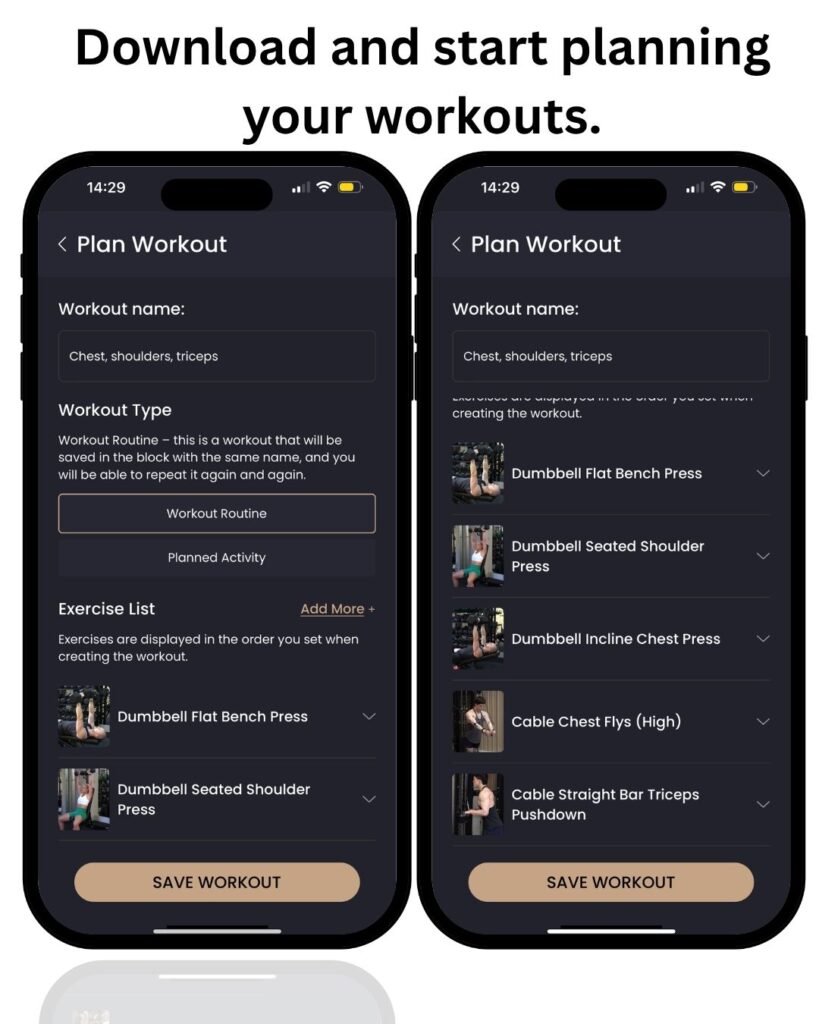
Saturday – Back and Hamstrings
The final workout day of the split is Saturday, focusing on back and hamstrings. This is somewhat like a “posterior chain” day – hitting all the big muscles on the back side of your body. Your back (lats, traps, spinal erectors) and hamstrings (back of the thighs) work together in many movements, especially pulling exercises and deadlifts, so it’s efficient to train them on the same day. We’ll do heavy pulls for the back, plus exercises to isolate the hamstrings. You’ll also inevitably work your glutes and lower back in some of these moves (which is great for overall strength and posture). After this, you get a well-earned rest on Sunday.
Saturday Workout: (Back & Hamstrings – 6 exercises)
Exercise | Warm-Up | Working Sets x Reps | Rest | Intensity |
Barbell Deadlift (Back/Hamstrings) | 2 sets x 5 (light technique sets) | 4 sets x 6–8** | 2–3 min | High (RPE ~8) – Heavy full-body pull |
Pull-Up or Chin-Up (Back/Biceps) | 1 set x 5 (bodyweight) | 4 sets x 8–12* | 2 min | High (to failure or assisted) |
Single-Arm Dumbbell Row (Back) | 1 set x 10 (light each arm) | 4 sets x 8–12 each arm | 90 sec/arm | High (strong pull to hip) |
Romanian Deadlift (Hamstrings/Glutes) | 1 set x 8 (light) | 4 sets x 8–12 | 2 min | High (stretch in hams, flat back) |
Back Extension (Hyperextension) (Lower Back/Hamstrings) | 1 set x 12 (no weight) | 4 sets x 12 | 60–90 sec | Moderate (bodyweight or light weight) |
Kettlebell Swing(Hamstrings/Glutes/Cardio) | 1 set x 10 (light) | 4 sets x 15 | 60 sec | Moderate-High (explosive, maintain form) |
(Deadlift reps: 6–8 range to focus on strength; deadlifts are taxing, so keep reps a bit lower. Still do 4 working sets.
Pull-Up/Chin-Up: If you cannot do 8 reps unassisted, use an assisted machine or resistance bands to help, or do lat pulldowns as an alternative. If you can do more than 12 bodyweight pull-ups, add weight with a belt.)
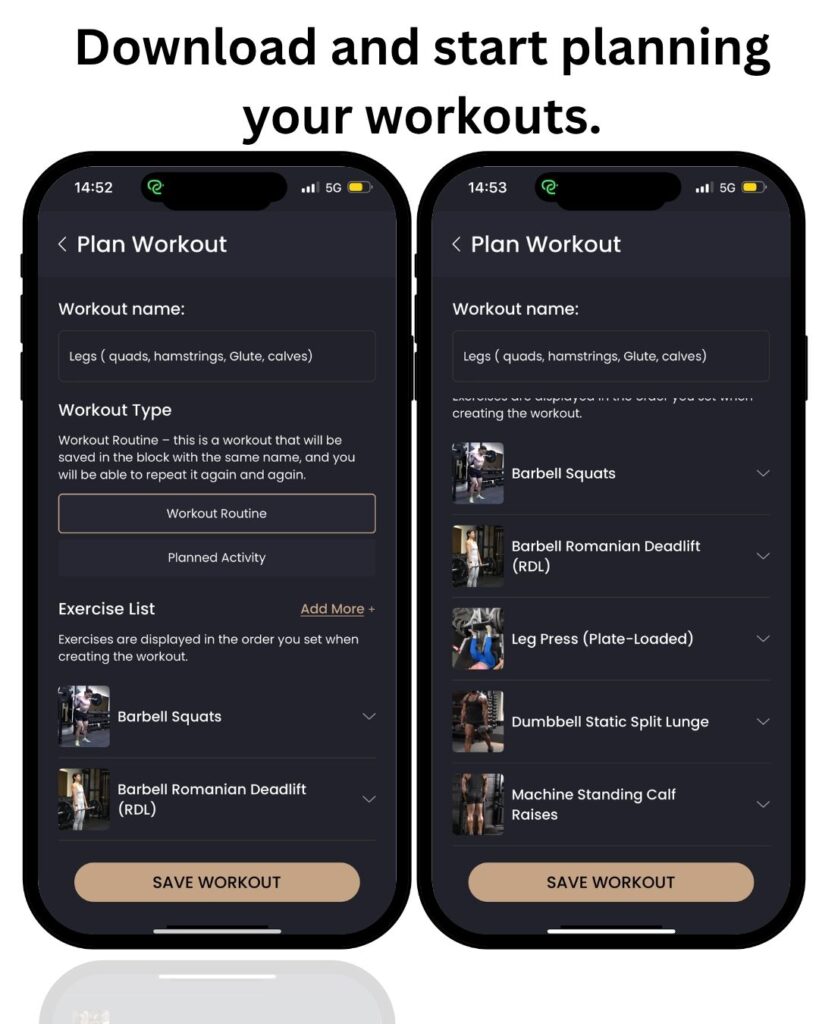
Sunday – Recovery (Steam & Cold Shower Therapy)
Sunday is all about rest, relaxation, and rejuvenation. No weight training today. Instead, the focus is on active recovery techniques – specifically, using steam/sauna and cold shower therapy as mentioned earlier. Aim for around 20 minutesof combined therapy. For example, you might do 2–3 rounds of: 5-10 minutes in a steam room or sauna, followed by a quick 1-2 minute cold shower. The heat will help loosen up any residual muscle tightness and promote blood flow, while the cold will reduce inflammation and flush out waste by causing blood vessels to constrict and then re-open. Many athletes swear by contrast hydrotherapy for reducing soreness and improving recovery. It’s also mentally refreshing – you’ll come out feeling relaxed yet invigorated.
If you don’t have access to a sauna or steam room, alternatives could be a hot Epsom salt bath (to relax muscles) followed by a cold rinse in the shower. Even without the cold portion, a warm bath can soothe aches. Some people also do contrast showers at home (alternating 1 minute hot, 30 seconds cold for a few cycles). Do what you have available – the key is to pamper your body today.
Besides the hot/cold therapy, make Sunday a day to recharge your mind too. Perhaps do some light yoga or stretching, take a gentle walk outside to get blood flowing, or just enjoy a hobby. Ensure you’re prepared for the week ahead: maybe do some healthy meal prep, or review your training log to see the progress you made last week and plan your targets for the next.
Listen to your body on this day. If you have any nagging soreness or minor tweaks, use rest, ice, gentle movement, or whatever therapy is needed to address it. If you feel fine, still resist the urge to do anything intense – remember, muscles grow during rest! Get a good night’s sleep, and you’ll be ready to crush another week of the 5-day split come Monday.
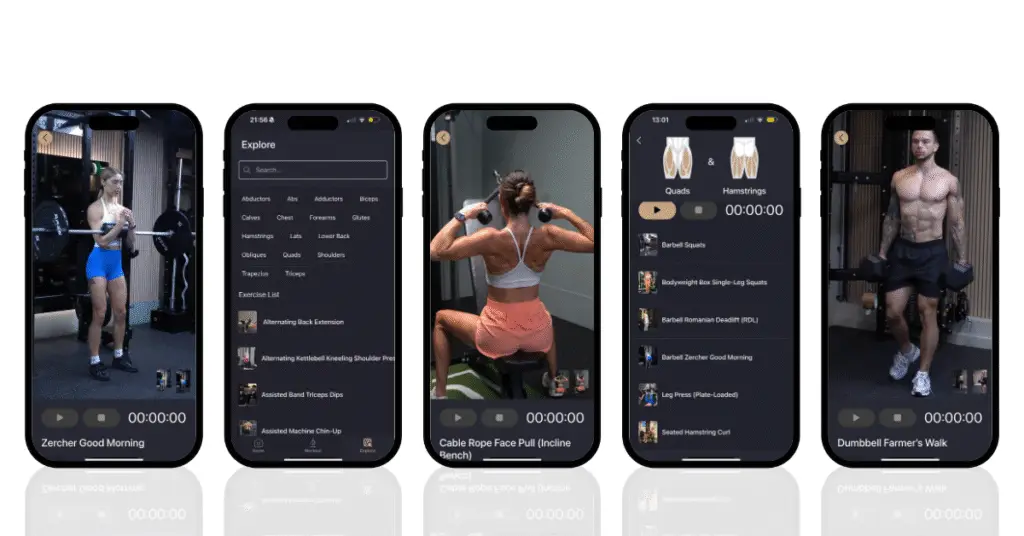
Conclusion
Congratulations, you now have a complete 5-day training program that has been proven to yield significant muscle gain when paired with proper nutrition and recovery. This is the very plan that helped me gain 8kg of muscle, and I’ve seen it work for many of my clients as well. The combination of a smart training split, progressive overload each week, a nutrient-dense diet, and dedicated recovery creates the perfect environment for muscle growth.
A few parting tips to maximise your results:
- Be Consistent: The best program in the world only works if you stick to it. Aim to hit your five workouts each week and give each session your full effort. Over time, those workouts add up to impressive progress.
- Track Your Workouts: Log the weights and reps you do for each exercise (the 12Reps app or a notebook works great for this). This allows you to clearly see your progressive overload, and there’s something motivating about surpassing your previous numbers. The 12Reps app, for instance, can help automatically adjust your workouts and ensure you’re always improving. Tracking takes the guesswork out and keeps you accountable.
- Focus on Form: Especially as you increase weights, maintain strict technique. Proper form ensures the target muscle is doing the work and helps prevent injuries. When trying to PR (set a personal record), form comes first, weight second.
- Nutrition and Sleep: Think of food and rest as extensions of your training. You’ve broken down muscle fibers in the gym; now you must rebuild them bigger. Hitting your protein and calorie targets, staying hydrated, and getting quality sleep each night will make a world of difference in your recovery and growth.
- Listen to Your Body: It’s normal to feel muscle soreness, but sharp pain or extreme fatigue are red flags. Adjust as needed; for example, if your legs are still very sore, you might consider swapping a workout day or taking an extra rest. This program is intense, and while pushing yourself is good, overtraining is not. With experience, you’ll learn the difference between pushing through discomfort and risking injury. Always err on the side of safety.
By following this program, you’re essentially applying tried-and-true principles of hypertrophy: moderate rep ranges (8–12, the “sweet spot” for muscle growth), high effort, progressive overload, and comprehensive muscle group coverage. You’re also giving your body the fuel it needs and ample recovery modalities to optimise results. It’s a holistic approach, and that’s why it works.
Now it’s time for you to put in the work. Bring your dedication, stay patient (muscle gain is a gradual process, but a rewarding one), and enjoy the journey. Over the next weeks and months, track your weight lifted, your body measurements, and even take progress photos. The changes will come if you stay consistent. Before you know it, you might be the one up 8 kilograms of solid muscle!
Good luck with your training, and remember that fitness is a lifelong marathon, not a sprint. Keep challenging yourself each week, and keep learning. If you ever need guidance or motivation, the 12Reps community and resources are there to help. Now go out there and crush those workouts – you got this!



